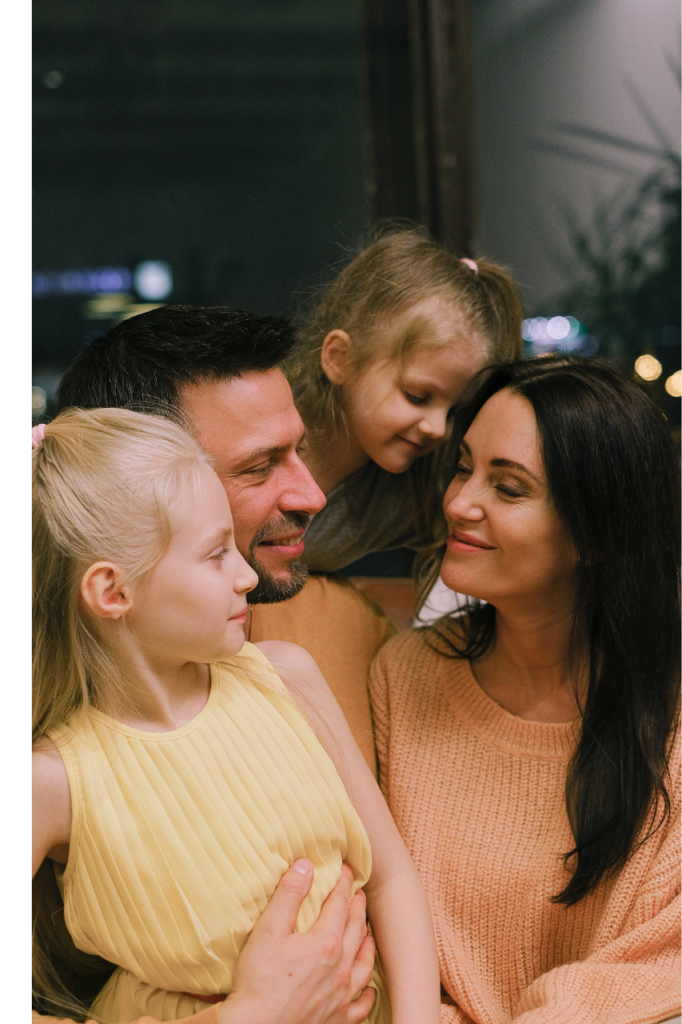If your parents ever fought in front of you when you were a kid, you are not alone. I remember some pretty heated arguments happening in my younger years. But what may be less common is if you remember your parents repairing in front of you. If your parents were anything like mine, the children would see the disagreement but any healthy relationship repairs that followed would take place behind closed doors. In fact, I have a vivid memory of witnessing a fight between my parents that led me to ask if they were going to get divorced, because I wasn’t aware they had quietly made up in their bedroom later on. (They now have been in a committed, loving marriage for over 30 years).
When I became a parent myself, my first impulse was to avoid disagreeing with my husband in front of our children. But I’m discovering that the best thing I can do for my kids to promote a healthy relationship environment in our home is to model both healthy conflict and relationship repair—sincerely apologizing, giving forgiveness, reconnecting, etc.—for them.
Tips for Repairing in Front of Your Kids
Here are some suggestions for ways that you can successfully model healthy relationship repairs in front of your kids:
Be Honest and Calm
When you’re repairing in front of your kids, stay calm and honest about the process. Let them see that disagreements are normal but can be resolved with patience and respect. Avoid involving them in the conflict, but don’t shy away from showing them that people can work through issues to maintain a healthy relationship.

Explain What’s Happening in Simple Terms
It’s important that children don’t feel responsible for adult conflicts or repairs. Use age-appropriate language to explain that grown-ups sometimes have disagreements, but they are working to make things better for the sake of their healthy relationship. For example, you might say, “Mommy and Daddy got upset earlier, but now we are talking to fix it because we love each other.”
Model Healthy Apologies
Make sure your kids see the full cycle, from expressing your feelings to offering a genuine apology. This helps them learn what a healthy apology looks like—taking responsibility, showing empathy, and asking for forgiveness.
Demonstrate Emotional Regulation

While it’s natural to have strong emotions, try to model emotional regulation during the repair process. If you are upset, show them how to calm down before talking. This reinforces the idea that in a healthy relationship it’s okay to feel strong emotions but it’s important to manage those emotions before addressing an issue.
Show Physical Reconnection
Children benefit from seeing physical signs of reconnection like a hug or a hand squeeze after an apology. It shows them that emotional closeness can be restored after conflict, which can be reassuring and promote emotional security.
Know When To Choose Privacy
Sometimes it is necessary to have privacy during a repair (like if your disagreement involves a specific child). That’s okay, too! If you can’t complete the whole repair process in front of your kids, find ways to share what you can with them. For example, before you go somewhere private, say something like, “We are having a disagreement and would like some privacy to figure things out and share our feelings with each other. We love each other, and making sure we’re on the same page is an important part of our relationship. We’ll be out in a little bit.” Once you’ve worked through things together, share with your kids the steps that led to your repair, even if you can’t share details.
By practicing these steps, you’re not just repairing the moment, but teaching your children valuable life skills they’ll use in their own healthy relationships.
A Real-Life Example
My husband and I had an opportunity to practice repairing in front of our children just the other day when we disagreed over a parenting issue. I was upset with him for the way we handled our frustration with our kids (there was a lot of yelling and big feelings from both parents and children), and after we had all cooled off and apologized to our kiddos, I was still feeling angry at my spouse.
I let him know that I wanted to talk about it once our kids had gone to bed since our son was in the room and I didn’t want to worry him (this is what my parents modeled for me with repairing their relationship rifts out of our sight). He very wisely replied, “Why wait? We can talk about it now.”
We then proceeded to have a conversation about what had happened and what we were both feeling about it. I shed some tears while my husband hugged me, and our kids were concerned that I was crying. We both reassured them that I was alright, and that this was how mommy and daddy make things better when we get upset: we talk about it and share our feelings, we apologize, and then we hug it out. Modeling this in front of them helped reinforce what it takes to maintain a healthy relationship, even in difficult moments.

Healthy Relationships: A Better Way
I am confident that this experience was good not only for my kids, but also for me and my husband. Breaking from well-intended but unhelpful relationship patterns that were passed down from our parents (like keeping repairs in the dark) takes courage, and is not always easy. But it’s one of the ways we can help our kids successfully grow into adults capable of building healthy relationships themselves.
So when you look back on how you were raised, think about which of your parents’ relationship habits are impacting the way you are showing up in your relationship and in your parenting. Talk about it with your partner, and if those habits aren’t healthy, make plans for how you can break those patterns. If you don’t see a way out, consider professional help—attend a Relationship Education class or workshop or find a couples’ therapist. Do whatever it takes to ensure that everyone in your family has a bright future full of healthy relationships—kids and parents alike. You’ve got this.

